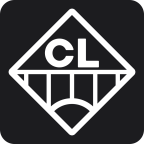1、 What is a coil laser cutting machine?
The coil laser cutting mechanism has established a highly integrated manufacturing ecosystem, which not only realizes fully automatic continuous production from coil unwinding to finished product stacking, but also completely subverts the traditional single sheet feeding operation mode, leading a fundamental change in production methods.
1.1 Definition and Core Architectural Components
Also known as a coil-fed laser cutting machine, coil laser cutting line, or laser blanking line, the system is composed of five synchronized subsystems that work together to deliver continuous material handling and cutting:
Decoiler / Unwinding Machine: Handles heavy metal coils and smoothly releases material from the roll.
Leveler / Straightener: Eliminates the coil’s natural curvature and internal residual stress (coil memory).
Servo Feeder and Roller Conveyor: Precisely controls material speed and positioning to ensure stable feeding during continuous cutting.
Fiber Laser Cutting System: The cutting core, often mounted on linear drives to enable complex cutting on moving strip material.
Unloading / Stacking System: Automatically separates finished parts from skeleton scrap and stacks them for downstream operations.
1.2 Distinction: Coil-Fed vs. Traditional Sheet-Fed Systems
The key difference between coil-fed and sheet-fed systems lies in material supply and logistics. Sheet-fed systems require an inventory buffer of pre-cut sheets and periodic stops for manual sheet changes. Coil-fed systems perform true continuous processing: the laser can cut while the strip is moving, eliminating manual intervention and maximizing uptime.
Purchasing coil stock is often cheaper per unit weight than buying pre-cut sheets because it avoids supplier cutting and handling fees. Combining lower input cost with optimized nesting on long strip material provides a dual economic advantage: cheaper raw material and higher material utilization. This cost-effectiveness is a primary driver of ROI.
2. Key Advantages of Coil Laser Cutting Machines
Coil-fed laser cutting machines deliver transformative operational and financial advantages that align with JIT production and lean manufacturing goals.
2.1 Superior Material Utilization Rate (Optimizing Raw Material Cost)
Unlike sheet-fed systems constrained by standard sheet sizes, coil processing enables continuous, highly optimized nesting, significantly reducing scrap. Material cost savings for specific part families commonly reach double-digit percentages compared with conventional sheet processing.
2.2 Continuous, Unmanned Cutting Without Manual Loading
Full automation drastically reduces labor dependency. A single large coil can provide thousands of meters of material; the end-to-end process—from coil load to finished-part stack—is continuous, enabling lights-out manufacturing and greatly increased throughput.
2.3 High Speed, High Precision, and High Flexibility Cutting
High-power fiber lasers combined with linear motion systems deliver fast processing and excellent cut quality. Laser cutting can consistently meet tight tolerances and produce superior edge quality. Compared with stamping, laser blanking is ideal for small-to-medium batch sizes and mixed-variant production because it avoids costly, long-lead-time tooling.
2.4 Fast Return on Investment (ROI)
ROI arises from multiple sources:
Lower labor and operating expenses.
Significant material savings.
High electrical efficiency of modern fiber lasers and reduced energy consumption.
Elimination of expensive tooling for flexible geometries.
By combining the raw material cost advantages of coil stock with the flexibility of laser cutting, coil-fed laser blanking occupies a cost-effective middle ground suitable for high-volume, high-mix industries such as automotive.
3. Coil Laser Cutting vs. Traditional Sheet Cutting
A direct comparison highlights the logistical and economic advantages of converting from discrete, manual sheet-fed workflows to integrated, continuous coil-fed laser blanking lines.
Operational comparison

3.1 Strategic Impact on Inventory Management
Sheet-fed workflows require both coil (or bulk) raw material and pre-cut sheet buffers. Coil-fed systems eliminate the need for pre-cut sheet buffers, converting raw coil directly to finished blanks. This reduces storage space, lowers inventory carrying costs, and supports JIT strategies—improving cash flow and enabling leaner operations.
4. Choosing the Right Coil Laser Cutting Machine
Selecting the optimal solution requires matching system specifications to expected throughput, material types, and part geometry.
4.1 Determining Required Laser Power
Laser power determines cutting speed and maximum thickness. Because coil systems typically run continuously, selecting sufficient power is essential to achieve desired throughput.
Recommended fiber laser power vs. material thickness (approximate guidance for carbon steel):

Note: stainless steels and highly reflective alloys typically require higher power. Power selection must consider material width and targeted cutting speed.
4.2 System Capacity Assessment
Manufacturers should evaluate the system’s maximum material specifications:
Coil weight and size: Industrial lines are built for heavy coils; decoilers commonly support tens of tonnes.
Coil width: Standard capacities range up to widths used for automotive or construction panels.
Thickness range: Many lines focus on thin-to-medium gauges but heavy-duty models exist for much thicker materials.
4.3 Importance of Line Integration and Service Support
Beyond hardware specs, supplier expertise in coil handling, leveling technology, and advanced automation software is critical to ensure reliable uptime and maximize benefits.









